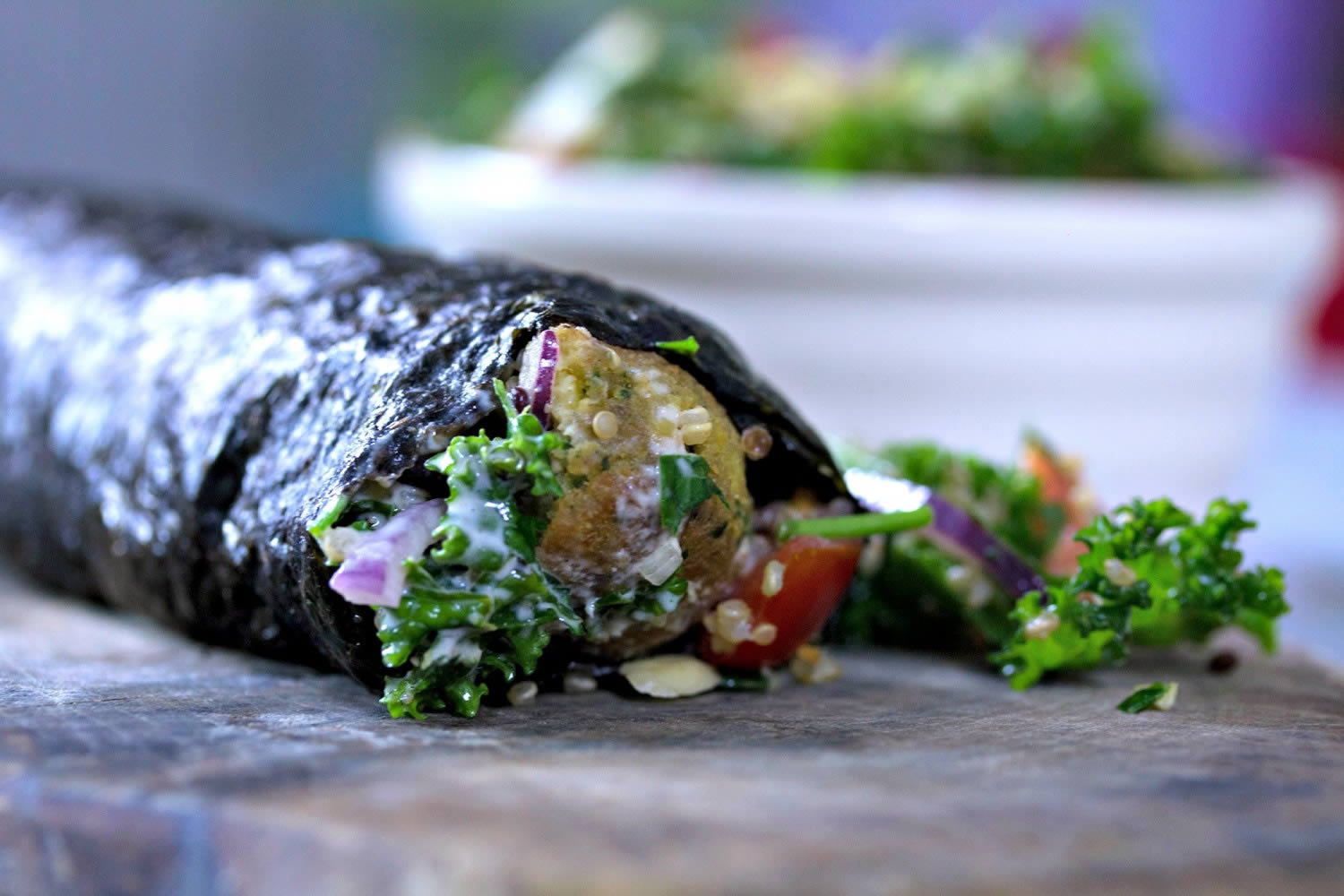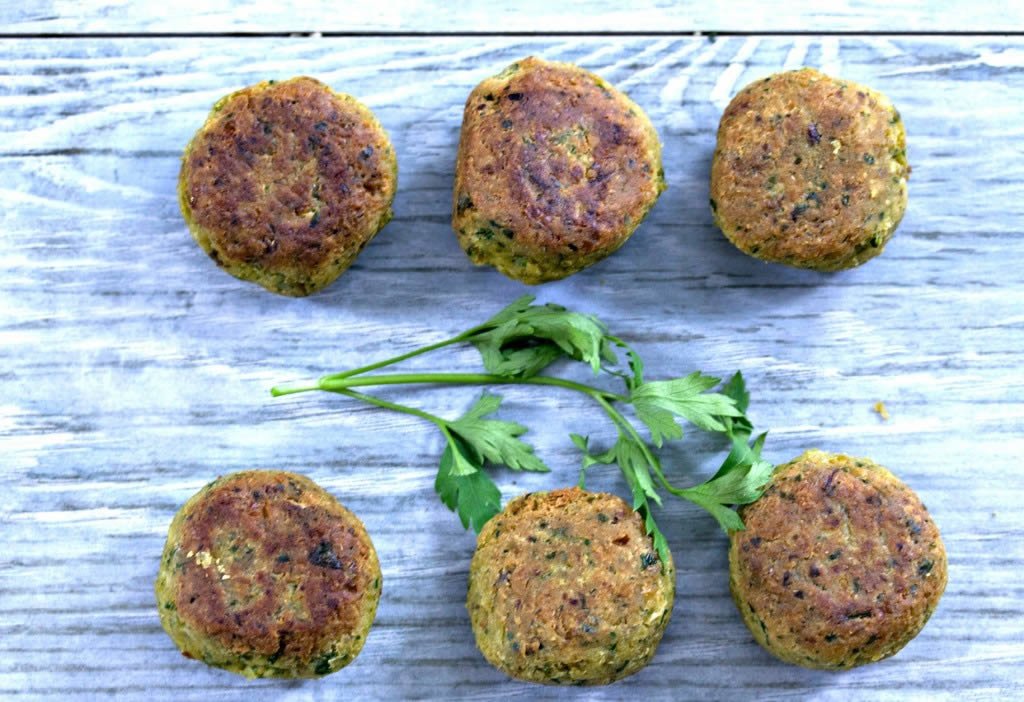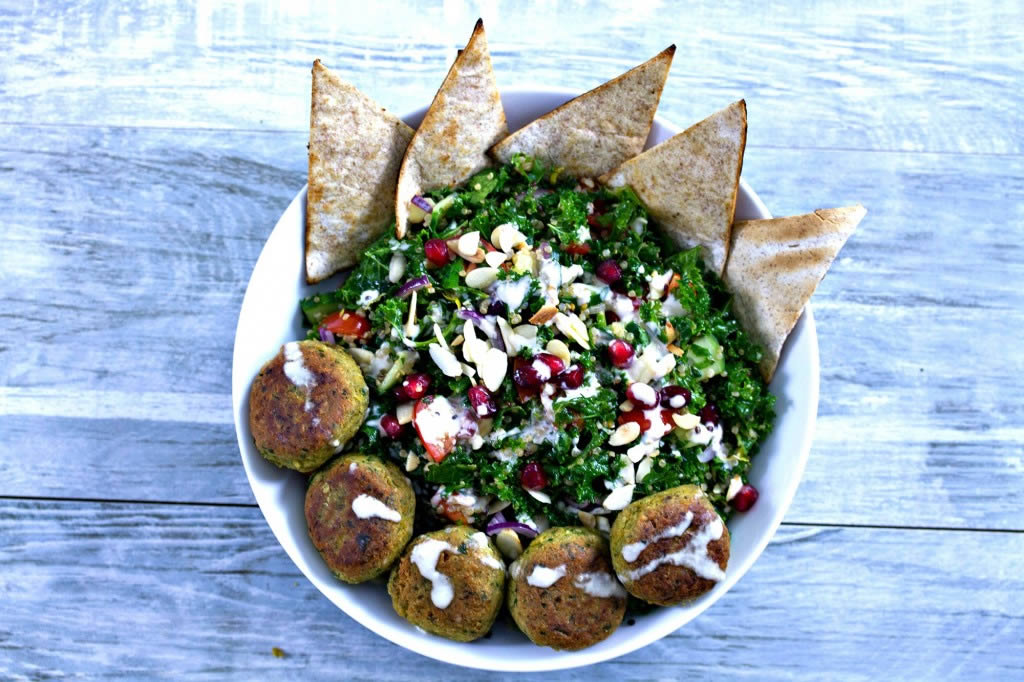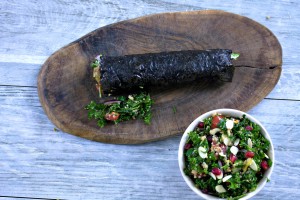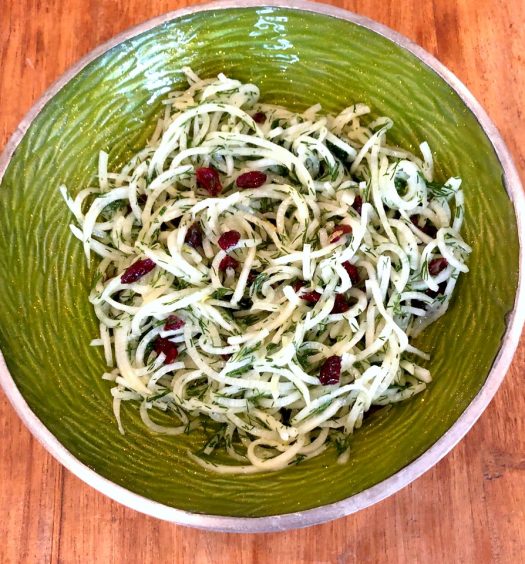I would have to count falafel as one of my favourite foods. I’m not just a fan of the spicy taste and crunchy texture, but they’re a great way to add more pulses to our diets. Falafel can be a fantastic meal choice – as long as they’re done correctly. I’m not crazy about the packaged ones in the supermarket which I find lack the proper taste and texture and whilst there are a couple of my favourite falafel stands that I visit, I do have issues with the oil they use to deep fry them.
I decided to make my own, partly because I wanted to try a healthier version and partly because I’m avoiding wheat and wanted to recreate my own wrap using nori sheets – trust me it’s inspiring.
Who would’ve known these would be so quick and easy to make? So much faster than a trip to the kebab shop and hardly any washing up. This a great way to enjoy a gluten-free falafel and there’re also the huge health benefits found in seaweed. What’s not to love about that?
Baked or fried?
We actually had a lengthy discussion amongst ourselves here at Eatdrinklivewell on the health gains to be made by baking them (my initial plan). The problem is that part of the deliciousness comes from the crunchy outside, something that simply cannot be achieved through baking although I was prepared to sacrifice some taste if it really made a vast nutritional difference.
But, to bake falafel they need to be rubbed in oil and cooked at a high temperature for at least 20 minutes. This prolonged high heat can damage some of the delicate nutrients within so I think it’s actually better to shallow fry them for a short amount of time and drain off any excess oil on a kitchen towel.
 The key point is to choose a fat that is stable at high temperatures to prevent harmful compounds from forming. I use olive oil for frying because, like saturated fats (coconut oil, lard, butter, ghee), its fats are highly resistant to heat. One study found that olive oil can be used in a deep fryer for over 24 hours before it oxidises excessively! It’s the industrial vegetable oils you want to avoid – the very ones used in processed foods and fast food outlets (soybean, rapeseed, corn, safflower and sunflower oils). Using these oils can create large amounts of oxidised fatty acids and harmful compounds in your food.
The key point is to choose a fat that is stable at high temperatures to prevent harmful compounds from forming. I use olive oil for frying because, like saturated fats (coconut oil, lard, butter, ghee), its fats are highly resistant to heat. One study found that olive oil can be used in a deep fryer for over 24 hours before it oxidises excessively! It’s the industrial vegetable oils you want to avoid – the very ones used in processed foods and fast food outlets (soybean, rapeseed, corn, safflower and sunflower oils). Using these oils can create large amounts of oxidised fatty acids and harmful compounds in your food.
Ideas for serving
I wasn’t convinced that I would be won over by nori wraps, I’ve tried them with a few other things and been disappointed, but I have to say after just one bite I was totally converted. The flavours compliment each other perfectly and the nori holds its shape all the way through which was also a surprise considering the amount of tahini sauce, salad and chilli I had packed in there. Next time I’m going to add a little sauerkraut to take it a nutritional step higher – not that it needs it.
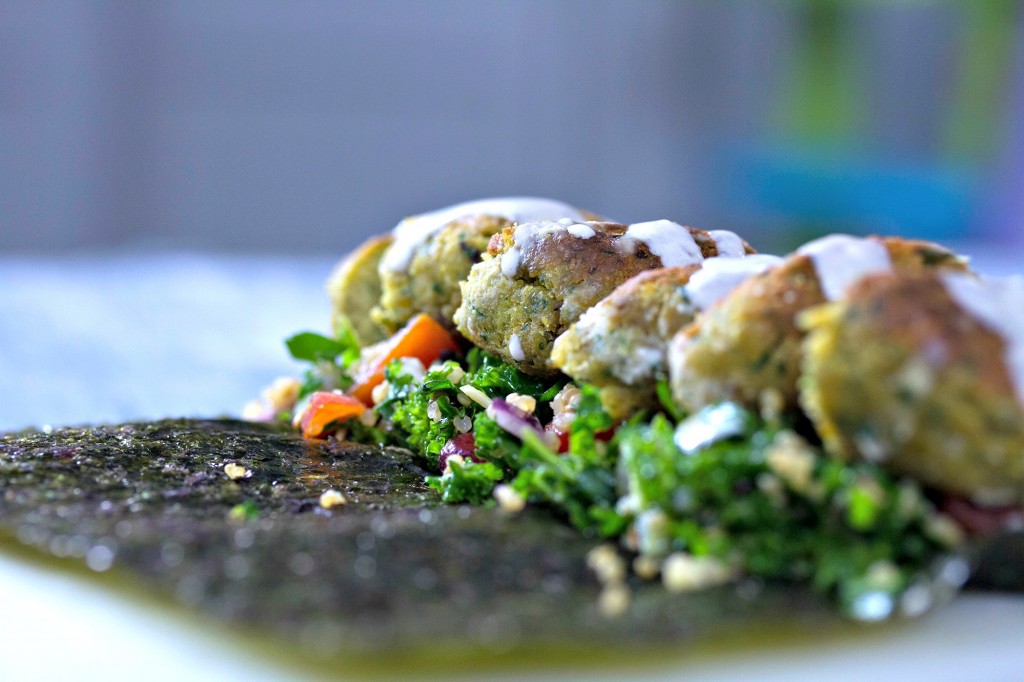
These falafel are also great accompanied with our kale and quinoa tabbouleh for a really satisfying, energising meal that’s literally bursting with nutrients.
- 1 tin chick peas
- 1 tbsp flour I use chickpea/gram but any will do
- 4 cloves garlic
- 1 small onion
- 1 egg
- 1.5 tsp ground cumin
- 1 tsp ground coriander
- 1/8 tsp cayenne pepper optional
- 1/4 cup chopped fresh parsley and coriander (optional)
- 1/4 cup sesame seeds
- 1 pinch salt and pepper
- 2 tbsp olive oil
- Drain and rinse the chick peas. Make sure that they're dried out fully, either by leaving aside or quickly rubbing with kitchen towel.
- Roughly chop the onion and garlic and place all the ingredients except the sesame seeds and oil in a food processor. Pulse until combined but still a bit lumpy.
- Remove the blade from the processor and stir in the sesame seeds.
- Heat the olive oil in a frying pan and roll the falafel mix into balls, flatten slightly and place in the pan.
- Lightly fry on both sides until crispy - about 3 minutes on each side.
- Remove falafel from the pan and lay on kitchen towel to absorb any excess oil.
Serve with a tahini sauce which is made by simply mixing tahini paste with warm water until you get a creamy texture. You can also add a little lemon juice and crushed garlic for more flavour.
Try these falafel with our kale and quinoa tabbouleh (pictured) and do give nori wraps a chance, we would love to hear how you get on.
<a href=”http://honestmum.com/tasty-tuesday/”><img style=”vertical-align: middle;” src=”http://i.imgur.com/9VwhltV.jpg” alt=”Tasty Tuesdays on HonestMum.com” style=”margin-left:auto;margin-right:auto;display:block” width=”301″ height=”189″/></a>

